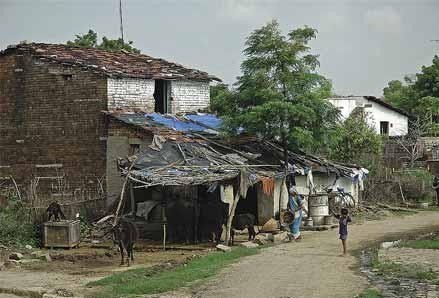Introduction
Rural development planning is a critical aspect of regional planning that focuses on the sustainable development of rural areas. These areas often face unique challenges such as limited infrastructure, lower economic opportunities, and population decline. Effective rural development planning aims to improve the quality of life for rural populations by addressing these challenges through comprehensive strategies. Recent trends and updates in this field have introduced innovative approaches to tackle the evolving needs of rural communities.

Key Issues in Rural Development
- Infrastructure Deficits
- Transportation: Many rural areas lack adequate transportation infrastructure, hindering mobility and access to essential services.
- Utilities: Access to reliable electricity, clean water, and sanitation remains a significant challenge in many rural regions.
- Digital Connectivity: The digital divide is pronounced in rural areas, with limited access to high-speed internet and telecommunications services.
- Economic Challenges
- Employment Opportunities: Rural areas often have fewer job opportunities, leading to higher unemployment rates and outmigration.
- Agricultural Dependence: Many rural economies rely heavily on agriculture, making them vulnerable to market fluctuations and climate change impacts.
- Entrepreneurship Barriers: Limited access to capital, markets, and business development services stifles entrepreneurship and economic diversification.
- Social Issues
- Healthcare Access: Rural populations frequently face challenges in accessing healthcare services due to distance, shortage of medical professionals, and limited facilities.
- Education: Rural schools often struggle with funding, staffing, and maintaining facilities, impacting educational outcomes.
- Demographic Changes: Aging populations and youth outmigration lead to demographic imbalances, affecting community vitality and labor availability.
- Environmental Concerns
- Land Degradation: Unsustainable farming practices, deforestation, and overgrazing contribute to soil erosion and loss of arable land.
- Water Scarcity: Water management issues, exacerbated by climate change, threaten agricultural productivity and water availability for rural communities.
- Biodiversity Loss: Habitat destruction and pollution impact biodiversity, reducing ecosystem services critical for rural livelihoods.
Strategies for Rural Development
- Improving Infrastructure
- Transportation Networks: Invest in road construction and maintenance, enhance public transportation options, and develop rural-urban linkages to improve mobility.
- Utility Services: Expand access to electricity, water, and sanitation through public-private partnerships and community-driven projects.
- Digital Connectivity: Promote the deployment of high-speed internet through government subsidies, private sector partnerships, and community broadband initiatives.
- Economic Diversification
- Agricultural Innovation: Encourage sustainable agricultural practices, support value-added agricultural products, and integrate technology in farming.
- Rural Tourism: Develop tourism based on natural, cultural, and historical assets to create alternative income sources and employment opportunities.
- Small and Medium Enterprises (SMEs): Provide financial incentives, training, and market access to support the growth of SMEs in rural areas.
- Enhancing Social Services
- Healthcare Improvements: Invest in rural healthcare infrastructure, promote telemedicine, and incentivize medical professionals to work in rural areas.
- Education Initiatives: Improve school funding, enhance teacher training, and introduce digital learning tools to elevate educational standards.
- Community Engagement: Foster community participation in planning processes to ensure that development projects address local needs and priorities.
- Environmental Sustainability
- Sustainable Land Management: Implement practices such as agroforestry, conservation tillage, and integrated pest management to combat land degradation.
- Water Resource Management: Promote efficient water use, support rainwater harvesting, and protect watersheds to ensure sustainable water supply.
- Biodiversity Conservation: Establish protected areas, support sustainable tourism, and promote community-based conservation initiatives to preserve biodiversity.
Recent Trends and Innovations
- Smart Villages
- Concept: Smart villages leverage technology to enhance rural living standards through improved connectivity, access to services, and economic opportunities.
- Implementation: Examples include digital education platforms, e-health services, and smart agriculture using IoT devices for precision farming.
- Integrated Rural Development
- Approach: Integrated rural development considers economic, social, and environmental dimensions, promoting holistic development strategies.
- Projects: Multi-sectoral projects that combine infrastructure development, economic diversification, and social services are being implemented in various regions.
- Climate-Resilient Agriculture
- Practices: Adoption of climate-smart agricultural techniques, such as drought-resistant crops and sustainable irrigation methods, to enhance resilience to climate change.
- Programs: Initiatives like the FAO’s Climate-Smart Agriculture program support farmers in adapting to changing climatic conditions.
- Community-Led Development
- Model: Empowering local communities to take charge of development projects through participatory planning and decision-making.
- Outcomes: Enhanced project sustainability, greater community buy-in, and more relevant and effective development interventions.
Conclusion
Rural development planning is essential for addressing the unique challenges faced by rural areas and improving the quality of life for rural populations. By focusing on infrastructure improvement, economic diversification, social service enhancement, and environmental sustainability, planners can create vibrant and resilient rural communities. Recent trends and innovations, such as smart villages and integrated rural development, offer promising pathways for achieving these goals. Community engagement and participatory planning remain crucial for ensuring that development strategies are inclusive, effective, and sustainable.



